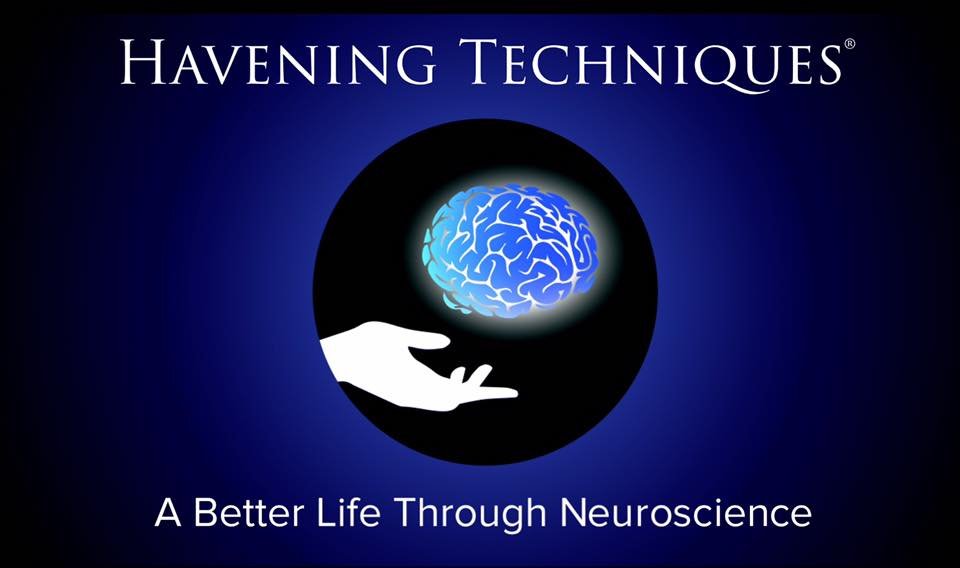
Havening Techniques®
Gentle, neuroscience-based therapy for trauma, phobias, anxiety and more
What Is the Havening Technique®?
Havening is a touch-based psychosensory therapy that uses gentle, soothing movements to help the brain de-link emotional pain from past experiences.
This means that the very first part of the chain reaction causing emotions such as fear or anxiety is no longer able to work. It’s like taking away the first domino in a long line of dominoes so the chain reaction can’t start anymore. The anxious response or unhelpful behaviour is released!
By applying comforting touch to the arms, face or hands (known as Havening Touch), we send calming signals to the brain that down-regulate the stress response. This process can help you gently release traumatic memories, calm anxiety, and install new, supportive emotional patterns.
Unlike traditional talk therapy, Havening engages the brain and body together — creating a powerful reset at the neurobiological level.
How Does Havening Work?
When you experience a distressing or traumatic event, your brain can encode that memory in a way that feels stuck. The amygdala (your brain’s alarm system) continues to react, even when the threat is long gone.
The process employed in the Havening Techniques system allows healing to take place by tapping in to the electrochemical makeup of our brain. The mechanisms used are similar to those in EMDR, but they include the latest advancements in neuroscience and harness the powerful healing opportunities of mindful touch.
Dr. Kate Truitt, Neuroscientist and Clinical Psychologist, describes Havening Touch as a particular type of soothing touch, that activates tiny receptors in the skin called c-tactile fibres. These fibres only respond to slow, gentle touch and have projections to a variety of different brain areas. When activated, these nerve fibres release oxytocin, serotonin and other neurochemicals that promote feelings of peace and calm as well as reducing stress and pain.
Havening helps to:
Interrupt this alarm response
Reduce emotional reactivity
Install a felt sense of safety and calm
Create new neural pathways through neuroplasticity
Backed by neuroscience, Havening is a gentle way to bring the brain and nervous system back into balance.
What Can Havening Help With?
In a session, I’ll guide you to use soothing Havening Touch while we explore the emotional patterns you'd like to shift. You’ll remain fully awake and in control throughout — no hypnosis is used.
Each session is:
Calm, supportive, and trauma-informed
Adapted to your comfort level
Collaborative — you’ll be invited, not pushed
Often surprisingly uplifting
Some clients feel noticeable relief after just one session; others benefit from a gentle series.
Havening is particularly effective for:
Trauma and PTSD
Phobias and irrational fears
Panic attacks
Chronic anxiety or stress
Shame or low self-worth
Emotional overwhelm
Grief, anger, and emotional blocks
Childhood emotional wounds
It can also be used to build emotional resilience, boost confidence, and reinforce positive change after other therapies like CBT or hypnotherapy.
What to Expect in a Havening Session
How a Traumatic Event Becomes Encoded in our Brain
There are very specific conditions that need to be met before trauma is encoded in the brain, but once they are met, research tells us the neurons that encoded that trauma will stay activated permanently, and our amygdala will become triggered any time it recognizes something that reminds us of the activating event.
That encoded traumatic memory will stay activated until something is intentionally done to deactivate or “depotentiate” it. This is where Havening has shown to be very effective. An event has the potential to be permanently encoded in our brain if the following conditions are present:
An event occurs
The event holds meaning for us i.e., produces an emotional response.
The landscape of our Brain is vulnerable. Several factors determine the landscape of our brain including:
a) our experiences and exposures across our life to date
b) our upbringing
c) our temperament - our sensitivity to stressors
And finally, the event is perceived as inescapable.
The effect of being presented with these four conditions is that the brain is flooded with high frequency Gamma waves which have two effects:
The perception of threat, results in the Amygdala triggering fight/flight/freeze response, an acute stress response that prepares the body to fight or flee.
Special receptors called AMPA Receptors are permanently glued to the surface of the Amygdala which ensure that the memory along with the emotional component (feelings we had at the time), cognitive component (thoughts we had at the time), sensory component (images, sounds, smells, taste and touch) and autonomic component (sweating, blushing) connected to the event, will be permanently stored along with the memory.
If, in the future, we experience anything that, in any way, reminds us of that event the initial response will be triggered once again.
How a Traumatic Event Becomes Decoded in our Brain
The impetus for Dr. Rudens’ thinking about how the brain decodes traumatic memories came from a study by psychophysiologist Melvin Harper (2012). In his research, Harper identified that psychosensory techniques increased the brain’s delta wave activity.
The application of Havening touch causes the brain to be flooded with low-frequency Delta waves which results in the release of chemicals that have the effect of dissolving the glue that was anchoring the AMPA Receptors to the surface of the Amygdala.
The receptors are then drawn back into the cell to be broken down and taken out of action. It’s as if the sentries on duty have been permanently retired with the result that the encoded trauma has been dismantled
This means that the link to the initial trigger event is broken along with all of the emotional, cognitive , sensory and autonomic components have been removed so we might have some hazy memory of the event, but it will hold no emotional charge for us.
This automatic trigger response is nature’s oldest and most potent survival strategy to protect from us from danger but realistically as soon as the initial threatening event has passed, and we have dealt with it and learned from it, it’s unhelpful to have the anxious response or unhelpful behaviour triggered on an ongoing basis throughout our lives.
Is Havening Right for You?
If you’ve tried traditional therapies but still feel emotionally stuck, anxious, or reactive, Havening could be a transformative next step. It’s also ideal for people who prefer less talking and more gentle, embodied change.
Sessions are available in-person or online and can be blended with CBT or Hypnotherapy for deeper integration.





